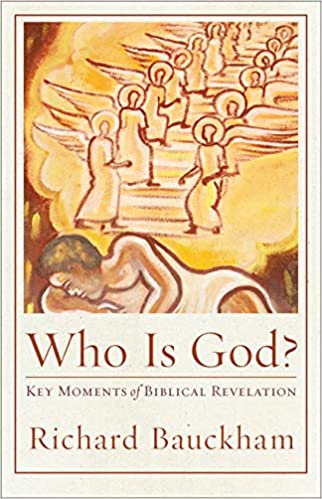BEN: Particularly fascinating is what you say about John 1.51 compared to the Jacob at Bethel story. You point out that Jesus is saying he is the staircase to heaven, the means into an intimate relationship with the Father. But he is also somehow like the pole with the snake that Moses lifted up. I would imagine that these two concepts were very difficult for Gentiles not educated in the OT to understand. Both images seem to convey Jesus is a means to an end— a love relationship with God the Father. Yes? But at least the former image suggests Jesus is not merely the staircase to heaven, but in fact the temple, the locus of God’s presence while he was on earth. But the phrase ‘the Word took on flesh and tabernacled among us’ has conveyed to many the idea of Jesus’ temporary direct divine presence on earth during his lifetime. Help us unpack these complex ideas.
RICHARD: Jesus as the new temple is undoubtedly a major theme in the Gospel of John. But, though it is tempting to find it in 1:51, I think that it would complicate the image too much. Jesus would have to be both the staircase and the place Bethel. Images become ineffective if we make them too multivalent. And Jesus doesn’t have to say everything at once! So I think 1:51 is the first of the many cryptic references to the cross and exaltation of Jesus in the early chapters of John. Jesus is “lifted up” to join earth and heaven, like the ladder in Jacob’s dream. The fact that the verbal echo of Genesis 28 is “the angels ascending and descending” indicates that it’s the communication between earth and heaven that is the theme. Jesus as the staircase here is a parallel image to Jesus as the “way” (road) to the Father in John 14. The bronze serpent is also an image of the cross and exaltation: Jesus is “lifted up” like the snake. It doesn’t bother me that you would have to know the OT well to understand these images. Gospels were written to be read in community and everywhere there were some people (especially Jews, of whom there were some in most Christian communities) who would study the Gospel and share their more expert understanding with others. I’m quite sure that John wrote a Gospel that could be studied with the same intensity as he and other Jewish exegetes studied the Hebrew Bible. At the same time, the major images of the Gospel all have a level of easily appreciated meaning for everyone: wine, water, shepherd and sheep, etc.













